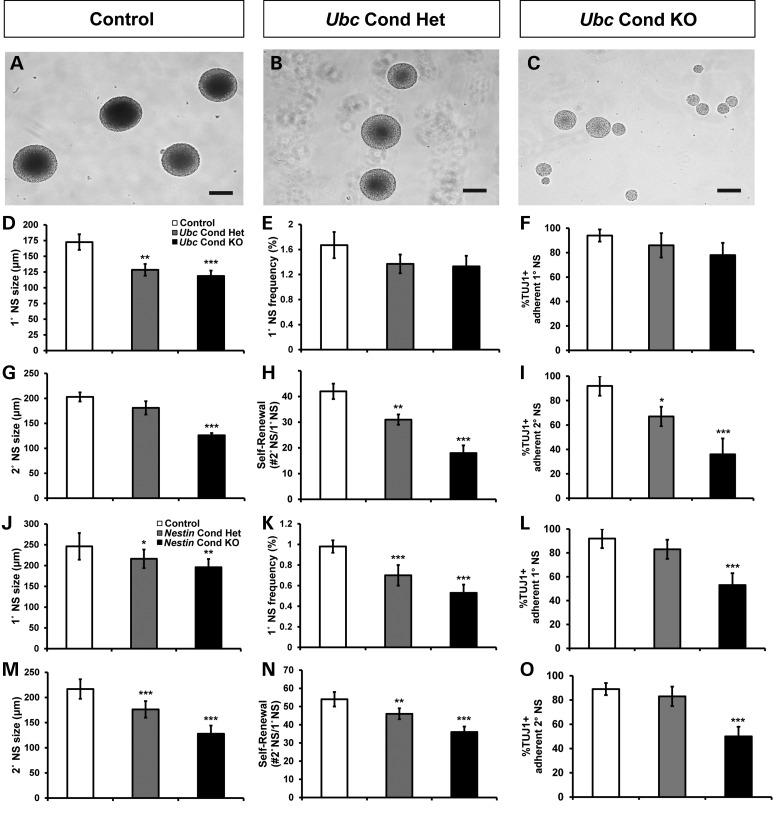Figure 4.
Neural stem cells derived from adult Chd7 conditional knockout mice exhibit impaired proliferation, self-renewal and neuronal potential. (A–C) Representative images of neurospheres derived from SVZ tissue of adult control (A), Ubc Cond Het (B) and Ubc Cond KO (C) mice. (D–O) show quantification of 1°NS and 2°NS size (μm), 1°NS frequency, 2°NS self-renewal (expressed as the number of 2°NSs formed from a single 1°NS) and percentage of neuronal lineage-positive (TUJ1+) differentiated adherent neurospheres from control, Ubc Cond Het, Ubc Cond KO, Nestin Cond Het and Nestin Cond KO adult mice. Neurospheres derived from Ubc Cond Het and Ubc Cond KO adult mice exhibit Chd7 dosage-dependent reductions in 1°NS size (D), as well as 2°NS size (G), and self-renewal (H) compared with controls. Neurospheres generated from Nestin Cond Het and Nestin Cond KO adult mice show Chd7 dosage-dependent reductions in 1°NS size (J) and frequency (K), and 2°NS size (M) and self-renewal (N), compared with controls. (E) There is no change in Ubc Cond Het or Ubc Cond KO 1°NS frequency compared with controls. (I, L and O) Neuronal potential is reduced by 61% in Ubc Cond KO 2°NSs (I), 42% in Nestin Cond KO 1°NSs (L) and 44% in Nestin Cond KO 2°NSs (O) compared with controls. There is no change in neuronal potential of Ubc Cond Het or Ubc Cond KO 1°NSs compared with controls (F). Scale bars in (A–C): 100 μm. Error bars in (D–O) indicate SEM (n = 3 per genotype). *P < 0.05, **P < 0.01, ***P < 0.001 by unpaired Student's t-test. 1°NS: primary neurosphere, 2°NS: secondary neurosphere.

